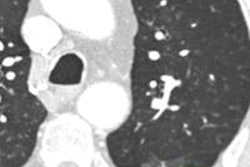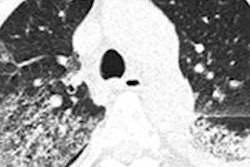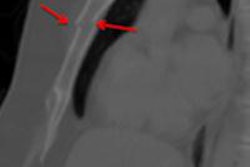Dear AuntMinnie Member,
The research keeps piling up in favor of the effectiveness of CT screening for lung cancer. Today, a study published in the New England Journal of Medicine shows just how beneficial CT screening of the highest-risk patients can be.
Armed with the huge National Lung Screening Trial database, researchers from the U.S. National Institutes of Health and other centers wanted to see how CT lung cancer screening worked in populations with different risk factors. They found that while CT wasn't that effective in low-risk groups, it worked very well for high-risk individuals.
In the highest-risk group, they found that one lung cancer death would be prevented for every 161 screening studies performed. That number is several times better than even the most positive estimates for mammography.
Is the study good news for CT lung cancer screening? It depends on your perspective: The number-needed-to-screen statistics for high-risk patients are certainly exciting, but CT screening advocates might be disappointed that the results could eventually be used to advise against screening of lower-risk people.
Read more by clicking here, or visit our CT Digital Community at ct.auntminnie.com.
Oosterwijk on CDA
In other news, radiology informatics expert Herman Oosterwijk is back with an article on the Clinical Document Architecture, or CDA, a new format for exchanging data between electronic health records (EHRs).
Mr. Oosterwijk sees major differences between CDA and the previous standard, version 2 of HL7, and there are multiple "flavors" of CDA depending on how it's used. What's more, CDA implementations are still in their infancy.
It's worth knowing more about CDA, as the standard is poised to become the main transport mechanism between different EHR systems, Mr. Oosterwijk believes. Find out more by clicking here, or visit our Healthcare IT Digital Community at healthcareit.auntminnie.com.
Rads on rounds
Finally, everyone's been talking about how radiologists need to raise their visibility to patients and clinicians. But how many people are doing something about it?
A team from the University of California, Irvine did just that with an experiment in which they sent a senior radiology resident on rounds with clinicians. The resident discussed exams, consulted with physicians, and -- wait for it -- even talked to patients!
The project met with overwhelming approval, and most clinicians said it helped them improve their knowledge of radiology. In addition, 95% said they would like to see radiologists on rounds in the future. Can it be done? Read more by clicking here, or visit our Residents Digital Community at residents.auntminnie.com.




















